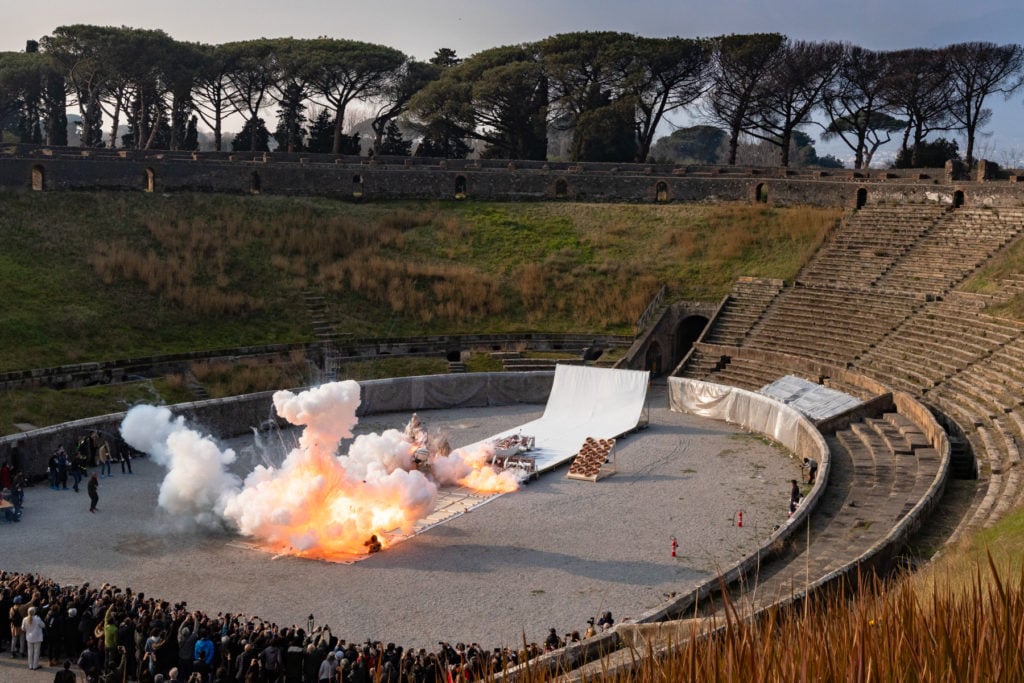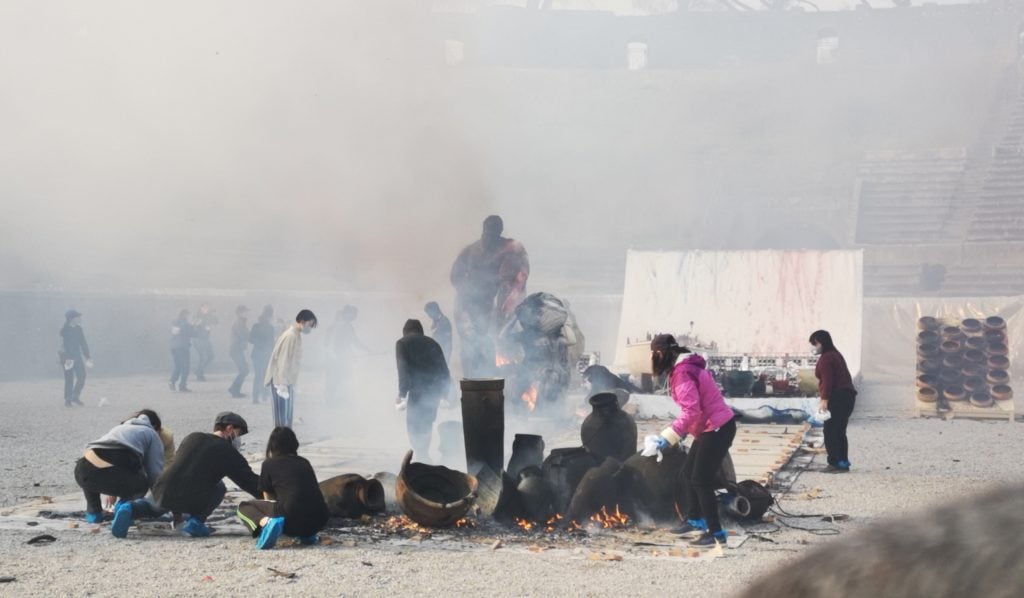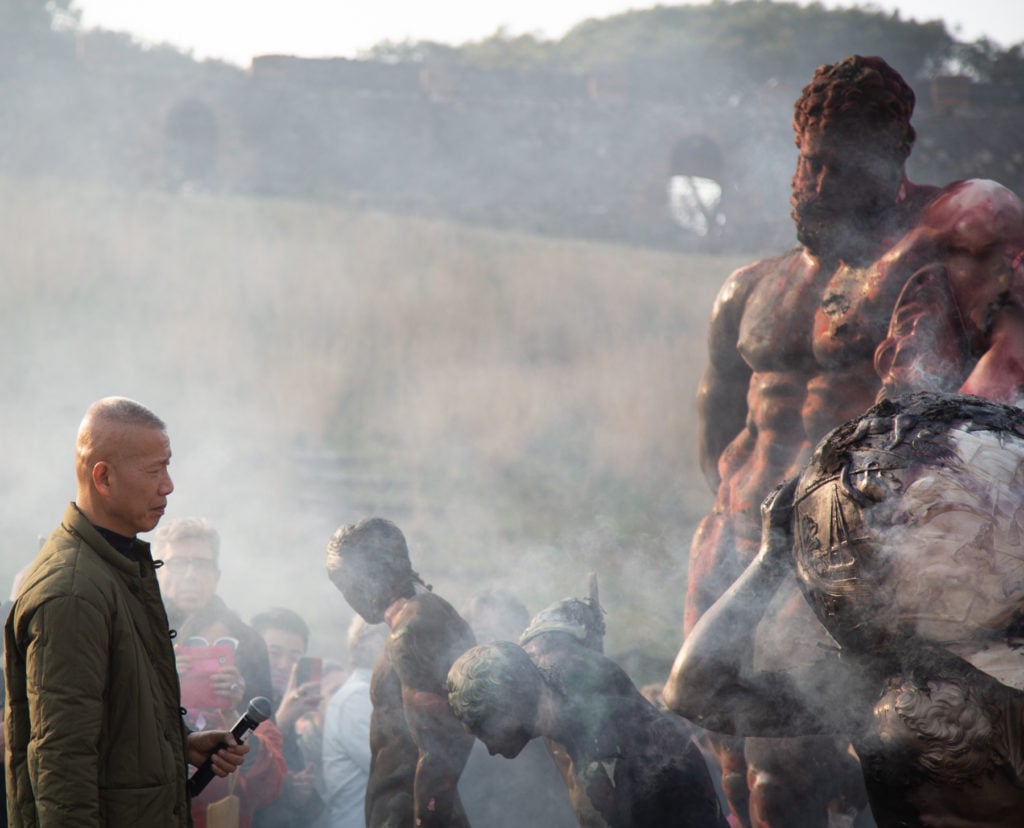Art & Exhibitions
2,000 Years After the Explosion of Vesuvius, Chinese Artist Cai Guo-Qiang Blew Up Pompeii Yet Again
The ancient city's amphitheater was the site of an explosive new performance by the artist.

The ancient city's amphitheater was the site of an explosive new performance by the artist.

Jessica Zhang

On the afternoon of February 21 in Pompeii, as crowds gathered anxiously in the chilly air of the ancient city’s amphitheater, Chinese artist Cai Guo-Qiang picked up a fireworks fuse from the ground and shouted in excitement. Instantly, the sky lit up in a cloud of fumes and colors, 2,000 years after the volcanic eruption of Mount Vesuvius buried the ancient civilization of this Roman city. Now, the city was exploding again.
The performance, titled Explosion Studio, began with small bursts that clouded the amphitheater with greyish pink smoke, with Cai shouting excitedly each time he pressed the explosion button.
On a nearby platform, 84 artifacts were arranged along a canvas, and before the audience even recognized that the event was over, Cai’s team began excavate the works. Statues of Hercules and Venus were suddenly made anew by the fireworks—and were then swiftly carried away to National Archaeological Museum of Naples for an exhibition of Cai’s work opening the next day.
“The amphitheater comprises the history of violence and animalism, which have a fundamental connection to gunpowder,” Cai said. “It’s almost the same as preparing for a war.”
This project is part of Cai’s series “An Individual’s Journey Through Western Art History,” and follows up on a daytime explosion event and an exhibition last November in Florence
At the Archaeological Museum, the works were scattered across each floor to respond to objects in the institution’s collection, making for a wonderful “scavenger hunt” to discover and rediscover the museum’s treasures. New meanings were given to the modern reflections. The encounter and juxtaposition of Cai’s works and the collection throughout the museum has produced new energies and stories—even some of the work embedded in the secret room of erotic art in Pompeii and Herculaneum.
Not everything always goes exactly as planned. In his opening remarks, Cai mentioned that “90 percent of the work would not have taken place if there was rain or strong wind”, adding that he prayed every day for a good weather. But it seems he forgot to pray that nothing else would delay the performance, which had to be pushed back three hours because of a union strike in the city.
Cai laughed and said he still thought it was a good turnout. “Every day I had to convince the city and the museum that the weather will be good,” he said. “I just believed it.”
See images and watch video from the event below.
Explosion Studio, 2019, Video documentation. Directed by Shanshan Xia; produced by 33 Studio. Courtesy Cai Studio.

Artworks being excavated by Cai’s team after the performance. Photo: Shanshan Sun, courtesy Cai Studio.

Cai Guo-Qiang looking at his work, Exploding Hercules after the explosion. Photo: Yvonne Zhao, courtesy Cai Studio.